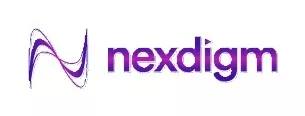- within Employment and HR topic(s)
- in North America
- within Employment and HR, Family and Matrimonial and Accounting and Audit topic(s)
- with readers working within the Banking & Credit industries
The Employees' Provident Fund Organization (EPFO) has embarked on a transformative journey with creating a faster, smarter, and more transparent social security ecosystem in India.
Traditionally reliant on lengthy paperwork processes, EPFO is now evolving into a technology-driven platform that prioritizes speed, accountability, and member-centricity. At its core, this transformation is not merely a system upgrade—it is a structural overhaul that aligns the organization with the aspirations of India's modern workforce and business community.
What's New with EPFO?
Under the updated EPFO framework, reforms have been implemented across four key dimensions:
Enhanced Efficiency and Reduced Delays
Operational workflows are being streamlined through automation and digital tools, significantly cutting down processing times across services.
Digital Transformation and Member-Centric Reforms
The shift to a digital-first model allows members and employers to access core services online, reducing reliance on physical visits and documentation. Member convenience is now central to EPFO's reform agenda.
Faster Claims and Seamless Pension Disbursement
Claims settlement processes, including pensions, have been re-engineered for speed and accuracy, ensuring that beneficiaries receive their dues in a timely and predictable manner.
Enhanced Grievance Redressal
A more responsive and integrated grievance resolution mechanism has been put in place, backed by tracking and escalation protocols for timely resolution.
Key Features of the EPFO Updates
The latest phase of reforms brings several operational enhancements that reflect the organization's commitment to modernizing its service delivery:
Filing a Claim Is Now Quick and Paperless
One of the most appreciated improvements is the simplified claim process. Whether it's for withdrawal (Form 19), pension (Form 10C), or advances (Form 31), members can file claims online through the EPFO portal or the UMANG app.
If the Universal Account Number (UAN) is Aadhaar-linked and verified, there's no need for employer approval. Bank details are verified via NPCI, and claims are ideally settled in under a week, eliminating the need to upload cheque leaf images or bank passbooks.
Appendix-E Revamp for Accurate Tax Reporting
Since April 2021, interest on employee contributions exceeding INR 2.5 lakhs per year are taxable. EPFO now separates taxable from non-taxable amounts in member accounts to make tax reporting easier and more accurate.
A recent update also corrected past TDS errors, which led TDS to be incorrectly deducted on total accumulations, rather than just on the taxable portion of interest. With a revamped tool (Appendix-E) effective from 1 May 2025, employers can now submit correct data, since most past errors were due to incorrect employer submissions in the PA statement and members can verify how their interest earnings are classified. All legacy corrections were to be completed by 30 April 2025.
Smarter Provident Fund Transfers: Eliminating Employer Dependencies
The recent updates with EPFO puts digital-readiness streamlined with the process of transferring PF balances across jobs. In four common scenarios—especially where Aadhaar is seeded and basic details match across records—you no longer need approval from past or present employers.
Governance That Prevents Problems Before They Start
EPFO reforms also place responsibility on employers to maintain accurate and up-to-date information. This includes:
- Keeping employee KYC current.
- Prompt UAN activation and linking.
- Internal audits to spot potential issues.
- Educating staff about claim processes and resolution tools.
A simplified Joint Declaration (JD) process now categorizes members into three groups based on their UAN and Aadhaar status:
- Category A: UANs issued after October 2017, Aadhaar-validated (JD submitted online).
- Category B: Older UANs, but Aadhaar-validated (also online).
- Category C: No Aadhaar link or deceased members (requires physical submission).
Employers can now also file JDs digitally, including in death cases.
Error Resolution: Delinking Inaccurate Member IDs
Sometimes, a UAN gets tied to the wrong member ID, distorting an employee's service record. This can cause delays or even claim rejections. EPFO now allows employees to de-link incorrectly attached IDs, helping restore an accurate employment history.
Room for Special Situations
EPFO hasn't left out those in unique circumstances:
Bulk UAN Generation
For past employees or cases involving surrender of PF exemptions, employers can now generate UANs in bulk—even without immediate Aadhaar. These accounts remain inactive until Aadhaar is later seeded.
International Workers & Others Without Aadhaar
Some categories—like Nepalese or Bhutanese nationals, or Indians who've moved abroad—can submit claims physically using alternate IDs such as passports or citizenship documents.
Death Case Claims and Centralized Pension Processing System (CPPS)
EPFO's updated process makes it easier for nominees of the deceased to file claims:
- e-Nomination simplifies record-keeping.
- Claims are now processed in around 7 days.
- Fewer documents are needed—just a death certificate, nominee's KYC, and relevant claim forms.
Since January 2025, pension payouts are also handled centrally through any scheduled bank in India. The same bank details used for PF can be reused for pension claims, provided Aadhaar is linked.
In Some Cases, Payment via Demand Draft
While digital remittance remains the norm, EPFO now allows one-time payments via Demand Draft (DD) in rare cases where an employer can't use online systems. This ensures employee dues are honored, though any future payments must return to the digital mode.
What This Means for Employers and Employees
For employers, the recent EPFO updates simplifies compliance, minimizes delays in settlements, and reduces administrative overheads. For employees, it means more control over their provident fund accounts, quicker access to benefits, and a digital interface that keeps them informed at every step.
The overhaul is a clear signal: EPFO is ready to meet the demands of a digitally empowered India. As the organization continues to adopt best practices from both the public and private sectors, EPFO sets a new benchmark for efficiency, governance, and user experience in India's social security landscape.
The content of this article is intended to provide a general guide to the subject matter. Specialist advice should be sought about your specific circumstances.


